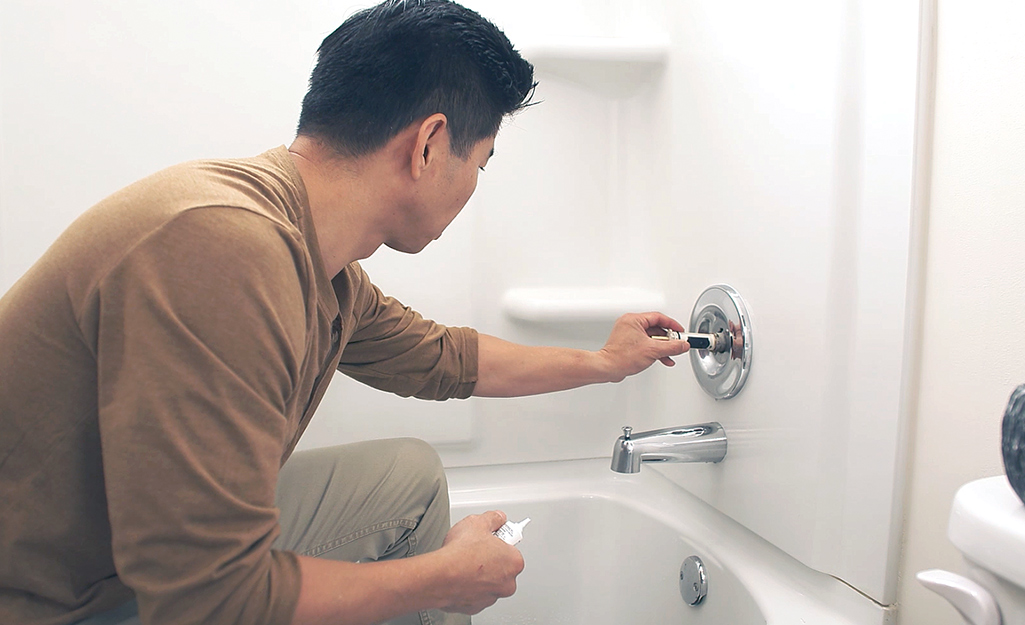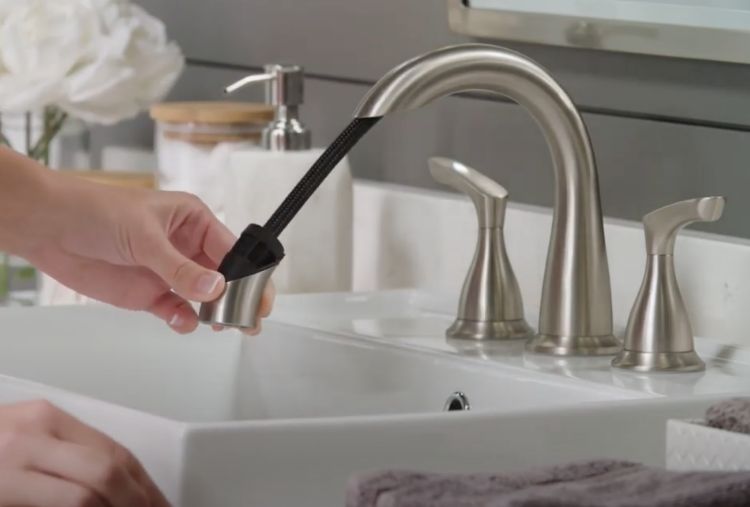They are making a number of good observations relating to Should I Repair or Replace a Leaky Faucet? as a whole in the content following next.

Trickling taps may appear like a small hassle, but their effect exceeds just the inconvenience of the audio. From wasting water to incurring unneeded monetary costs and health and wellness threats, disregarding a dripping tap can lead to numerous effects. In this post, we'll delve into why it's essential to resolve this typical home concern immediately and properly.
Waste of Water
Ecological Influence
Leaking faucets add considerably to water wastefulness. According to the Environmental Protection Agency (EPA), a single faucet leaking at one drip per second can lose greater than 3,000 gallons of water per year. This not only pressures water sources yet also influences ecosystems and wildlife dependent on them.
Financial Prices
Enhanced Water Bills
Beyond the environmental effect, trickling taps can pump up water expenses substantially. The gathered waste with time equates right into greater energy expenses, which can have been prevented with timely fixings.
Potential Residential Or Commercial Property Damage
Additionally, long term dripping can result in damage to components and surface areas bordering the faucet. Water accumulation can trigger discoloration, deterioration, and also structural issues if left unattended, causing extra repair work costs.
Wellness Issues
Mold And Mildew and Mildew Development
The continuous visibility of wetness from a trickling faucet produces an optimal setting for mold and mildew growth. These fungis not just compromise indoor air top quality but likewise present wellness risks, particularly for individuals with breathing problems or allergic reactions.
Waterborne Diseases
Stagnant water in leaking faucets can end up being a breeding ground for germs and various other pathogens, enhancing the danger of waterborne conditions. Impurities such as Legionella microorganisms thrive in stagnant water, possibly leading to major health problems when consumed or breathed in.
Do it yourself vs. Expert Repair service
Pros and Cons of Do It Yourself Fixing
While some might try to take care of a leaking faucet themselves, DIY repair services feature their own set of challenges. Without correct expertise and devices, DIY efforts can worsen the issue or lead to insufficient repair work, prolonging the trouble.
Benefits of Working With an Expert Plumber
Hiring an expert plumber ensures that the underlying source of the dripping tap is addressed successfully. Plumbings possess the experience and equipment to identify and fix faucet problems successfully, conserving time and minimizing the danger of more damages.
Step-by-Step Overview to Repairing a Dripping Faucet
Tools Required
Before attempting to take care of a trickling tap, collect the essential tools, including an adjustable wrench, screwdrivers, replacement parts (such as washers or cartridges), and plumber's tape.
Usual Faucet Issues and Their Solutions
Determine the kind of faucet and the specific issue creating the drip. Usual troubles include worn-out washers, rusty valve seats, or defective O-rings. Refer to supplier guidelines or on the internet tutorials for detailed guidance on repair work.
Safety nets
Normal Maintenance Tips
To prevent leaking taps, execute regular maintenance such as cleaning aerators, checking for leaks, and replacing worn-out parts promptly. Additionally, consider installing water-saving devices or upgrading to much more efficient fixtures.
Relevance of Prompt Services
Resolving trickling faucets as soon as they're noticed protects against more water waste and potential damages, eventually saving both water and cash in the long run.
Influence On Residential Or Commercial Property Worth
Understanding of Well-Maintained Residential Or Commercial Property
Keeping a building in good condition, consisting of dealing with upkeep issues like leaking taps, boosts its perceived worth and value amongst possible customers or renters.
Impact on Resale Value
Features with well-kept plumbing components, consisting of faucets, command higher resale worths in the property market. Addressing leaking taps can add to a positive perception throughout home examinations and arrangements.
Environmental Responsibility
Individual Contribution to Conservation
Taking responsibility for repairing dripping faucets aligns with broader initiatives towards water conservation and ecological sustainability. Every person's activities collectively make a considerable effect on preserving precious sources.
Lasting Living Practices
By prioritizing prompt fixings and taking on water-saving practices, individuals add to lasting living methods that benefit both existing and future generations.
Final thought
Addressing a trickling faucet surpasses simple convenience; it's a necessary step towards conserving water, lowering financial prices, and securing health and residential property. Whether through DIY fixings or expert help, taking action to repair trickling taps is a small yet impactful method to advertise responsible stewardship of resources and add to a much healthier, more sustainable future.
How to Fix a Leaky Faucet: Step-by-Step Repair Guide
A leaky faucet may seem like a simple annoyance, but if it's not fixed promptly, that leak could cost hundreds to potentially thousands. From water damage to mold, mildew, and high water bills, even a tiny leak can be catastrophic if left unattended. Damage like this can even affect the overall value of your home, so it's important to take the right approach for leaky faucet repair. You may need the help of a plumber in some cases, but we've got a few tips you can try on how to fix a leaky faucet before calling the pros.
Four Faucet Types
When you're learning how to fix a leaky faucet, the first step is knowing what kind of faucet you're working with! There are four common types.
Cartridge Faucets
Cartridge faucets come in one- or two-handled varieties. In one-handled cartridge faucets, hot and cold water combines in a single cartridge. In the two-handled versions, hot and cold water are controlled separately and mixed in the faucet.
Ball Faucets
Ball faucets have a single lever you push up and down to adjust the pressure and rotate to change the temperature. A slotted metal ball controls the amount of water allowed into the spout.
Compression Washer Faucets
They're the oldest type of faucet, but they're still used in many homes — especially older ones. Compression faucets have two separate handles that, when turned, raise or lower the washer that seals a water valve. This valve stops water from flowing through the faucet when it is turned off.
Disc Faucets
Disc faucets rarely need to be repaired due to their maintenance-free design. The water flow is controlled by two discs — the upper one raises and lowers against a fixed lower disc, creating a watertight seal. If your disc faucet starts leaking, you may need to replace the seals or clean residue buildup from the inlets.
Fixing a Leaky Faucet
Step 1: Turn Off the Water
Whether you're learning how to fix a leaky bathtub faucet or how to fix a leaky kitchen faucet, always turn off the water supply to your working area when you're fixing a leak. The last thing you want is a flood added to your list of things to fix.
Look for the shutoff valves below your sink or around the tub and turn them clockwise to stop the water flow. If your faucet doesn't have shutoff valves, you may need to turn off the water for the whole house. Check to make sure it's off by turning the faucet on. If nothing comes out, you're ready to start the repair.
Step 2: Take Apart the Faucet
How you disassemble your faucet depends on the type of fixture you have. You can use a flathead screwdriver to remove the caps on top of the handle or handles for cartridge and compression faucets. Inside, you should see handle screws. Unscrew these with a screwdriver to remove the handle.
Disc- and ball-style faucets will typically have an inlet screw near the handle, and removing that will reveal the interior of the faucet.
Detach the Valve Stem
For cartridge- and compression-style faucets, you'll see the inner valve stem or cartridge once you remove the faucet handles. If you have a compression faucet, unscrew the brass valve stem. If you have a cartridge faucet, pull out the cartridge. If your cartridge has been in place for a while, it may require some tools or extra force to remove it due to mineral deposits.
Examine and Replace Parts
Once you've removed the parts, check them out to confirm what needs to be replaced. You may see corroded rubber washers, O-rings, stems, or cartridges. On a ball-style faucet, check the seats and springs for damage.
If you need to repair a leaky disc faucet, check the inlet and seals on the lower disc.
Once you determine what parts must be replaced, visit your local hardware store. Bring the damaged parts with you to ensure you can purchase the correct components to replace them.
Clean Valves and Faucet Cavity
If you've removed a stem or cartridge, you may notice mineral buildup in the faucet's threads. Use white vinegar to clean the valve seat by soaking it for a few minutes, then scrub it away with a soft toothbrush and rinse with warm water. You can also clean the interior of the faucet in the same way.
Reassemble the Faucet
Once your faucet is cleaned and the required parts have been replaced, it's time to reassemble it. Put the pieces back together and slowly turn the water supply back on. Doing this slowly is crucial because too much initial water pressure can damage the new hardware you've just installed.
https://homewarranty.firstam.com/blog/how-to-fix-leaky-faucet

I was made aware of that editorial about Why It's Important to Fix Leaky Faucets through a friend on another web property. Do you know about somebody else who is in to the niche? Why not promote it. Kudos for being here. Don't hesitate to visit our site back soon.